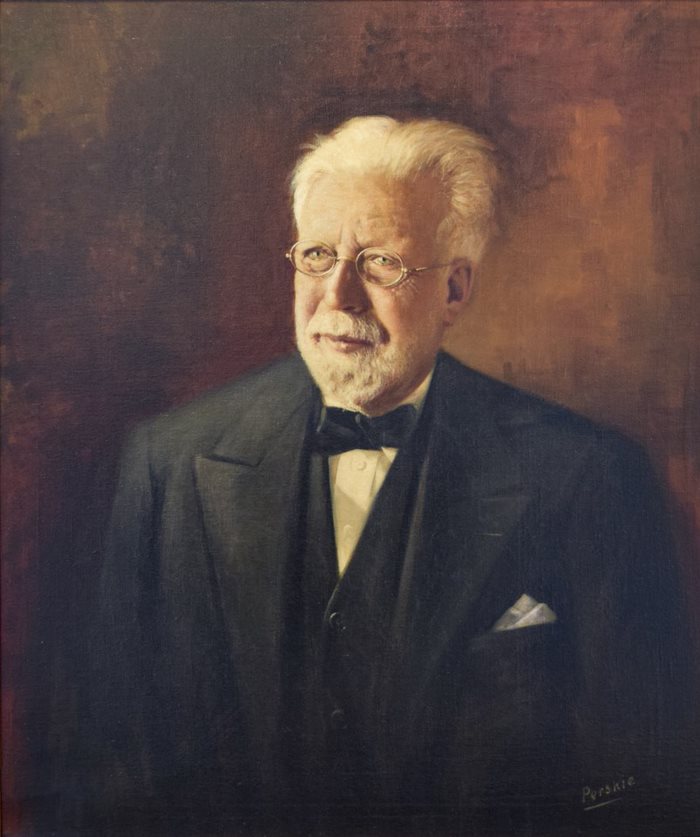David Philipson
Jacob H. Perskie (Russia 1865–1941 New Jersey)
Oil on canvas, ca. 1938
Cincinnati Skirball Museum
The son of German Jewish immigrants, David Philipson (1862–1949), American Reform rabbi, orator, and author, was born in Wabash, Indiana. During his early childhood the family moved to Columbus, Ohio. In March of 1875 Rabbi Isaac M. Wise, a personal friend of David’s father, wrote to the Philipson family about his plans to open a rabbinical seminary in the autumn. David, who was thirteen at the time and the oldest of six children, was about to finish grammar school. He decided to come to Cincinnati and enter the new Hebrew Union College. In 1883 Philipson became one of the first four to graduate from the Hebrew Union College. At the same time, he received his Bachelor of Arts degree from the University of Cincinnati.
After ordination he taught for several months at the College before accepting a pulpit in Baltimore, Maryland at Har Sinai Congregation. He served there from 1884 until 1888. From 1884 to 1886 he carried on post-graduate studies in Assyriology and other Semitic languages at Johns Hopkins University. In 1888 he returned to Cincinnati to serve as rabbi of K.K. Bene Israel Congregation (today’s Rockdale Temple). He served there until his voluntary retirement in 1938 when he became rabbi emeritus.
An awardee of numerous honorary degrees, Philipson served also as an instructor at the Hebrew Union College, teaching Biblical exegesis, Arabic and Assyrian from 1889 to 1891. He served as processor of homiletics from 1891 to 1906 and also lectured on the history of Reform Judaism at the College after 1906. Philipson participated in the Pittsburgh conference which formulated the principles of Reform Judaism, the so-called Pittsburgh Platform (1885). He was a founding member (1889) of the Central Conference of American Rabbis and served as its president from 1907 to 1909. He was an influential figure in the Hebrew Union College, both as teacher and as a member of the College’s Board of Governors and in the Union of American Hebrew Congregations (today’s Union for Reform Judaism). Philipson was a director of the Associated Charities of Cincinnati (1889–1942), a charter member and for many years a vice-president of the American Jewish Historical Society, and a member of the American Jewish Committee.
David Philipson wrote The Reform Movement in Judaism, The Jew in English Fiction and edited The Letters of Rebecca Gratz. He was a member of the board of translators of the Jewish Publication Society for the translation of the Holy Scriptures (1916), and editor of Selected Writings of Isaac M. Wise (1900), and a translator of Reminiscences of Isaac M. Wise (1901, 1945). In 1942 he wrote an autobiography, My Life as an American Jew. Philipson was a staunch advocate of Americanism and remained throughout his life an opponent of Jewish nationalism of any sort, particularly Zionism. His views on the subject appear in the tract The Jew in America. Philipson died in 1949 while attending a convention of the Central Conference of American Rabbis at Bretton Woods, New Hampshire.
Russian American immigrant Jacob H. Perskie was a gifted etcher and painter best known for a portrait of Franklin D. Roosevelt that became the official image of the 1932 presidential campaign. The portrait of Philipson may have been painted from a photograph, as is the custom for many portrait artists to this day.

